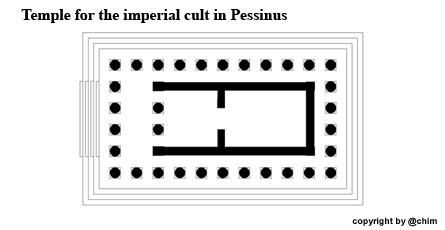 |
|
Ancient temples in Turkey Pessinus |
||||||||||||||||||||
 |
|
|||||||||||||||||||
|
||||||||||||||||||||
|
The temple for the imperial cult was enthroned in the centre of the city above the Agora. It was part of a Sebasteion referring to the imperial cult. The temple was accessible via a central staircase with two cavea wings which could be used as a theatre. It was finally determined that the excavated temple could not be identified as the Temple of Kybele, as researcher Charles Texier assumed when he "discovered" the temple's foundations in 1834. The decorative elements were designed in a conservative Augustan manner, suggesting that the building was probably built in the late Augustan period (about 15 AD). |
||||||||||||||||||||
| Emperor Augustus | ||||||||||||||||||||
|
Augustus (* 23. September 63 B.C. as Gaius Octavius; † 19. August 14 A.D.) was the first Roman emperor. Gaius Iulius Caesars, grand nephew and principal heir, won the power struggles that followed his assassination in 44 B.C. and was the sole ruler of the Roman Empire from 31 B.C. to 14 AD. |
||||||||||||||||||||
| DThe history of Pessinus: | ||||||||||||||||||||
|
|
||||||||||||||||||||
 |
||||||||||||||||||||
 |
||||||||||||||||||||
 |
||||||||||||||||||||
 |
||||||||||||||||||||
 |
||||||||||||||||||||
 |
||||||||||||||||||||
 |
||||||||||||||||||||
| The stairs below the temple | ||||||||||||||||||||
| Photos: @chim | ||||||||||||||||||||
| Translation aid: www.DeepL.com/Translator | ||||||||||||||||||||
| Source: Wikipedia and others | ||||||||||||||||||||
|
|



